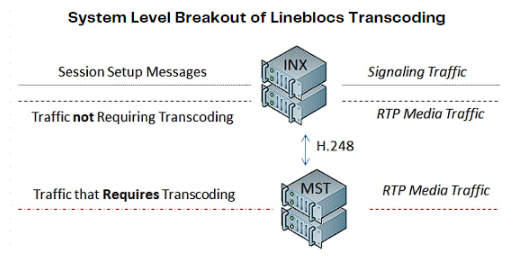
Intelligent Transcoding Solutions for VoIPand fax solutions
In order to provide high-quality end-to-end connectivity for real-time media streams the best codecs must be used for the network environment. Lineblocs transcoding solutions allow the endpoints within the network to operate independently in order to ensure the best user experience for voice, video, fax, or conferencing sessions.
Lineblocs transcoding solutions use high-performance DSP chips so the systems are scalable to thousands of sessions with perfect quality for any codec transcoding requirements. The Lineblocs solutions come with our media handling server (MST3) or as a component of our INX session controller.






